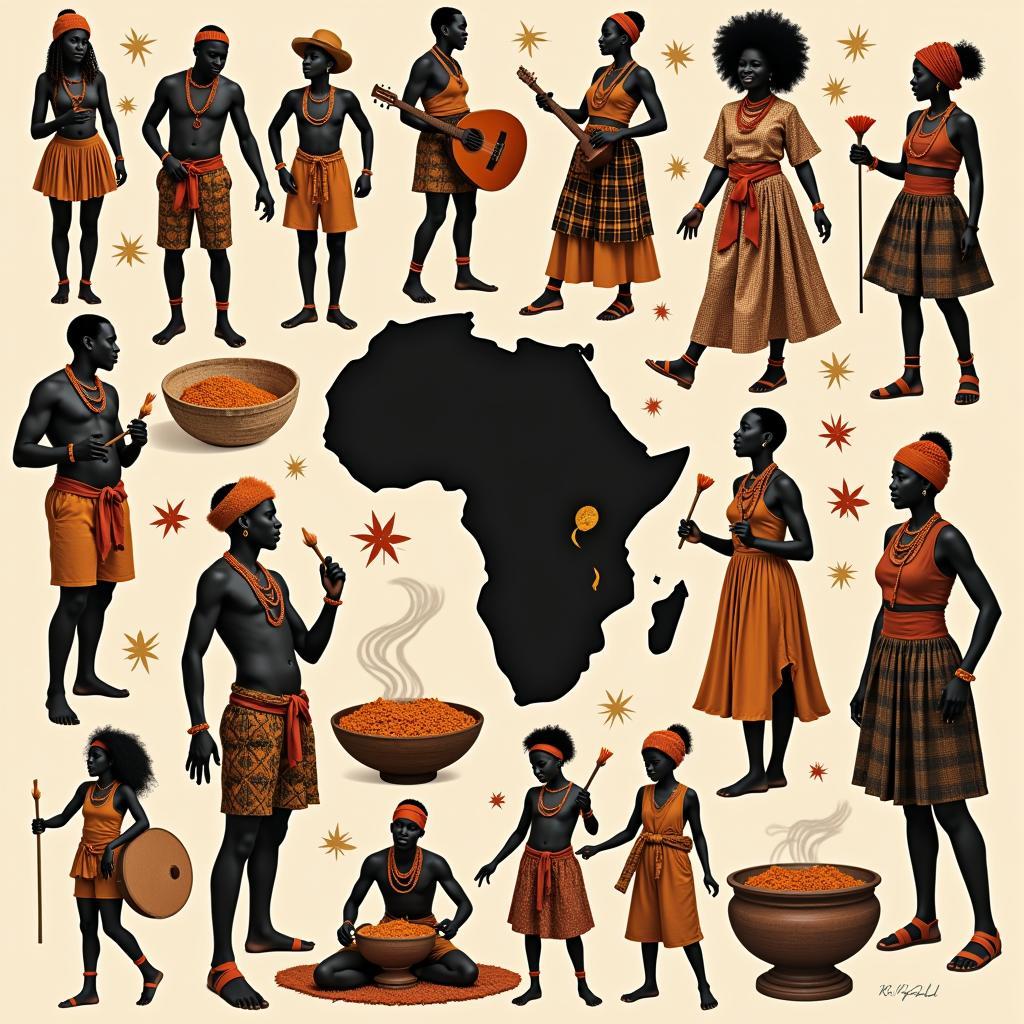Unveiling the Differences: African Elephant Male vs Female
The African savanna is home to the largest land mammal on Earth – the African elephant. These magnificent creatures, often differentiated as “African Elephant Male And Female”, roam the plains in tightly knit family groups, their lives intertwined with a rich tapestry of social interactions and survival instincts. However, while both genders share an undeniable bond, their physical characteristics, social roles, and even life trajectories differ significantly.
 African Elephant Male and Female Size Comparison
African Elephant Male and Female Size Comparison
Size and Physical Characteristics: A Tale of Two Giants
The most apparent distinction between male and female African elephants lies in their size. Males are significantly larger, often reaching heights of up to 13 feet at the shoulder and weighing up to 6 tons. This makes them true giants of the animal kingdom. Females, on the other hand, are comparatively smaller, averaging around 8-9 feet tall and weighing between 2.5 to 3 tons.
This size disparity extends to other physical attributes. Males possess larger, more prominent tusks, which can grow over 9 feet long. These formidable weapons play a crucial role in dominance displays and fights for mating rights. Females also have tusks, though they tend to be shorter and thinner than those of their male counterparts.
Social Structure: Matriarchal Societies and Roaming Bulls
African elephants live in complex social structures that are heavily influenced by gender roles. Females live in matriarchal herds led by the oldest and most experienced female, often referred to as the matriarch. These herds, comprising females and their young calves, rely on the matriarch’s wisdom and leadership for survival.
Male elephants, once they reach adolescence, typically leave their natal herds and embark on a solitary life. They may form loose bachelor groups with other males, but these associations are temporary. This solitary lifestyle is driven by their need to avoid competition for resources and mates within their family groups.
Reproduction and Parenting: From Musth to Motherhood
Reproduction in African elephants is another area where significant differences between the sexes are observed. Females reach sexual maturity around 10-12 years old and have a gestation period of 22 months, the longest of any mammal. Mothers are incredibly protective of their young, nurturing and teaching them essential survival skills for several years.
Males, on the other hand, experience a periodic state of heightened testosterone known as “musth.” During this time, they become increasingly aggressive and prone to displays of dominance, often engaging in fierce battles with other males for mating rights.
Conservation: Protecting the Giants
Tragically, both male and female African elephants face numerous threats, primarily from poaching for their ivory tusks and habitat loss due to human encroachment. Conservation efforts are crucial to ensure the survival of these magnificent creatures for generations to come. Understanding the unique characteristics and roles of both “african elephant male and female” is essential in developing effective conservation strategies.
Conclusion: Celebrating the Differences
While both male and female African elephants share the same ecosystem and face similar threats, their distinct physical characteristics, social behaviors, and reproductive roles highlight the fascinating diversity within this iconic species. Appreciating these differences is crucial not only for scientific understanding but also for fostering a deeper appreciation for the intricate tapestry of life that thrives on the African savanna.

